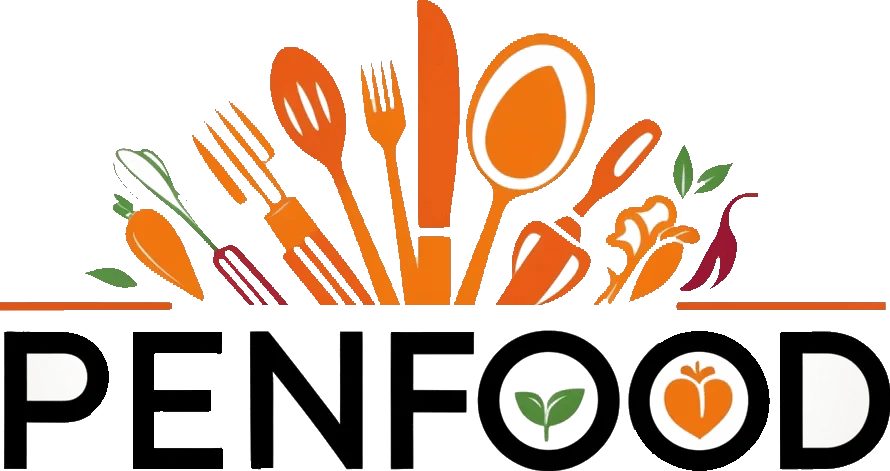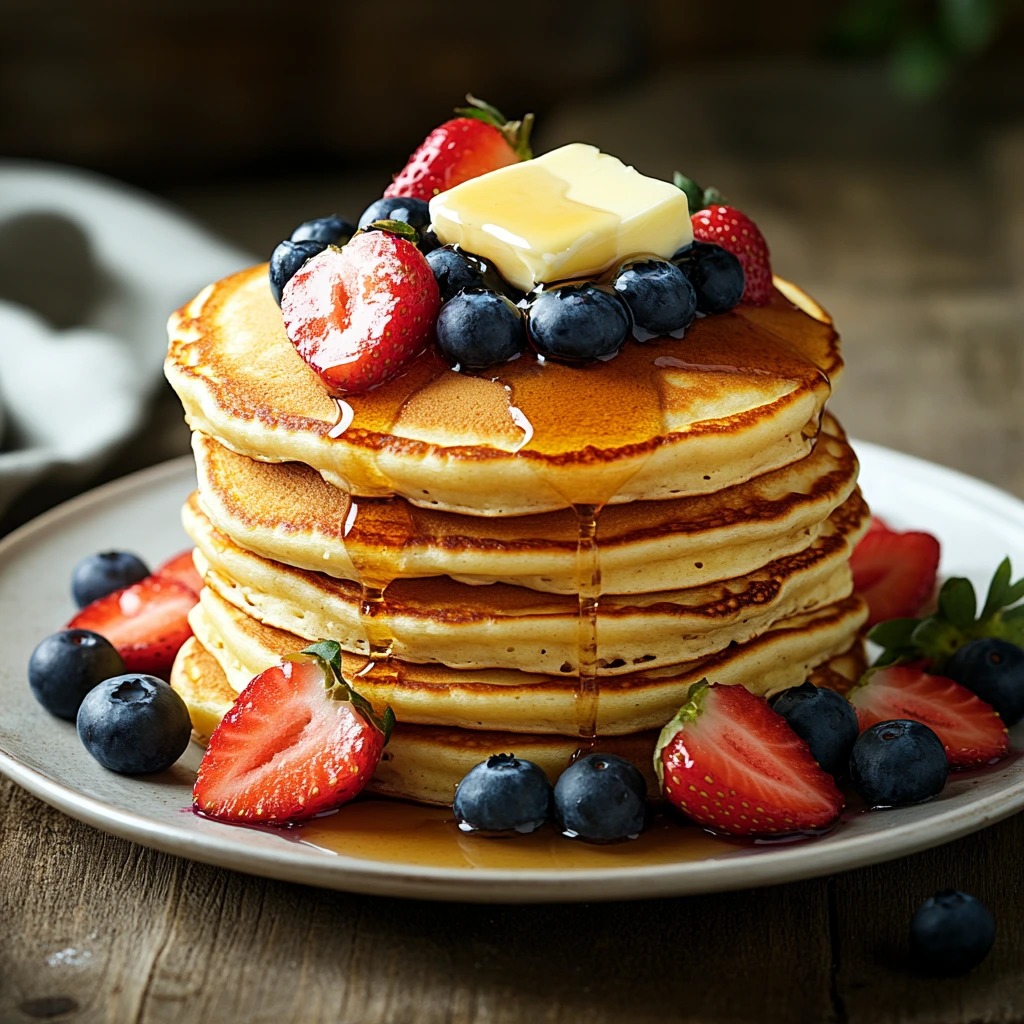Who doesn’t love waking up to a stack of golden, fluffy pancakes? 🥞 These breakfast staples have been winning hearts (and stomachs) for generations. Whether you’re rushing through a weekday morning or enjoying a slow weekend brunch, pancakes always fit the bill.
But what makes a pancake classic? It’s the perfect balance of a soft, airy texture and a slightly sweet flavor. No fancy frills, just pure comfort in every bite. In this recipe, we’ll take you through every detail to help you whip up the best classic pancakes, even if you’re a kitchen novice.
Ingredients for Classic Pancakes
To make the perfect pancake, you need the right ingredients. Each one plays a crucial role, and understanding them ensures your pancakes turn out flawless every time.
Essential Ingredients
- Flour (1 cup): The backbone of your pancake. All-purpose flour works best, but whole wheat or gluten-free alternatives can be substituted.
- Milk (1 cup): Provides moisture and richness. Regular whole milk is ideal, but plant-based options like almond or oat milk work too.
- Egg (1 large): Helps bind the ingredients together and contributes to fluffiness.
- Sugar (2 tbsp): Adds a hint of sweetness. You can use granulated sugar or substitutes like honey or agave syrup.
- Butter (2 tbsp, melted): Enhances the flavor and gives the pancakes a tender crumb.
- Baking Powder (2 tsp): The magic ingredient that makes your pancakes rise.
- Salt (a pinch): Balances the sweetness and enhances overall flavor.
Pro Tip: Always use fresh baking powder for the best results. Stale leavening agents can lead to flat, lifeless pancakes.
Optional Add-ins for a Twist
Feeling creative? Add some flair to your pancakes with these options:
- Blueberries or Chocolate Chips: For bursts of flavor in every bite.
- Vanilla Extract (1 tsp): Adds a subtle aroma.
- Spices: A dash of cinnamon or nutmeg can warm up the flavor profile.
Tools You’ll Need
Before diving into the recipe, gather your tools to make the process smooth and mess-free:
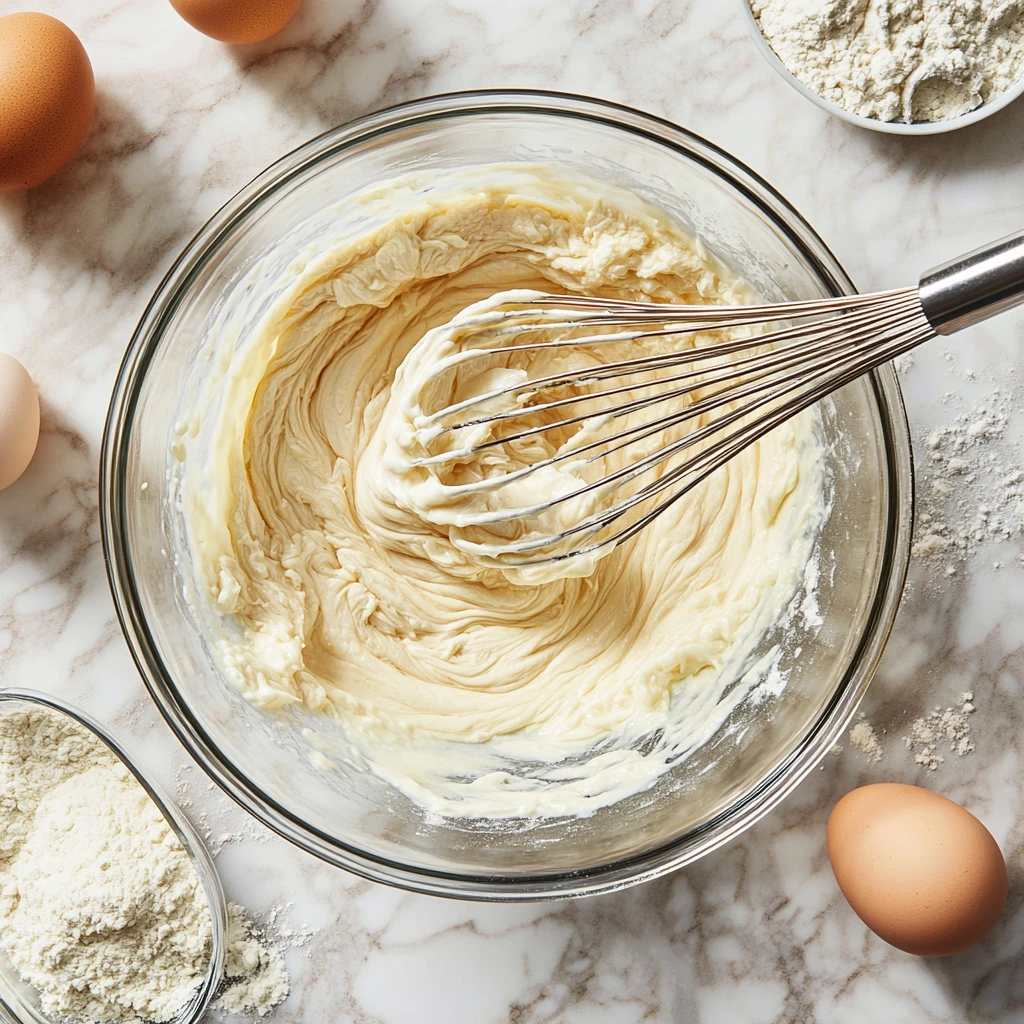
- Mixing Bowls (2): One for dry ingredients and one for wet.
- Whisk or Fork: For blending the batter evenly.
- Measuring Cups and Spoons: Precision ensures consistency.
- Non-Stick Griddle or Frying Pan: A non-stick surface is essential to prevent sticking and burning.
- Spatula: For flipping those beauties with ease.
With the right tools and ingredients at hand, you’re already halfway to pancake perfection! 🍽️
Step-by-Step Preparation
Making classic pancakes is a breeze when you follow these easy steps. Let’s break it down so you can nail the recipe on your first try.
Mixing the Batter
- Combine Dry Ingredients: In a large mixing bowl, sift together 1 cup of flour, 2 teaspoons of baking powder, and a pinch of salt. Sifting eliminates lumps and ensures an even mix.
- Blend Wet Ingredients: In another bowl, whisk 1 cup of milk, 1 large egg, and 2 tablespoons of melted butter. If using vanilla extract, add it here.
- Mix Wet and Dry: Slowly pour the wet mixture into the dry ingredients. Use a whisk or fork to mix until just combined. Small lumps are okay; overmixing can make the pancakes tough.
Quick Tip: For fluffier pancakes, let the batter rest for 5–10 minutes. This allows the gluten to relax and the baking powder to activate.
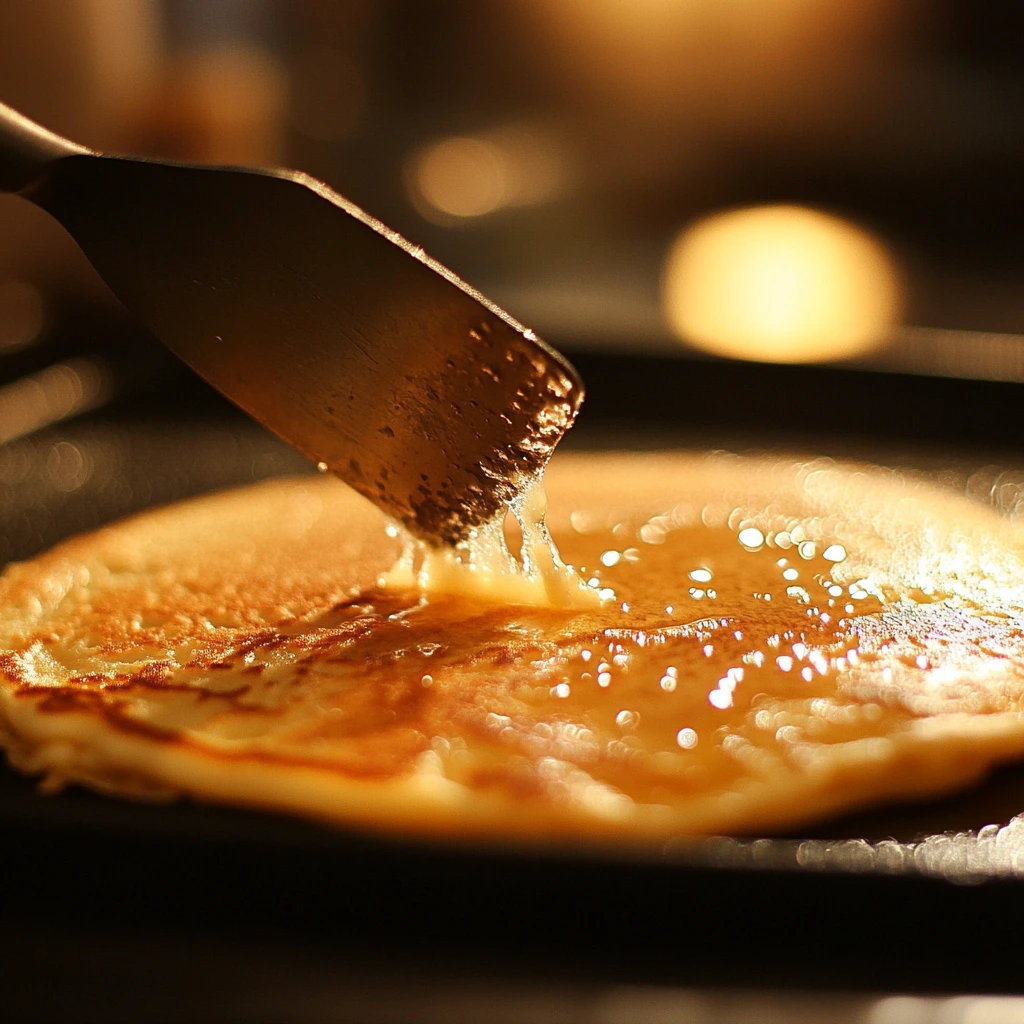
Heating the Pan
The right temperature is crucial for evenly cooked pancakes. Here’s how to get it just right:
- Heat a non-stick griddle or frying pan over medium heat.
- Lightly grease the pan with butter or a non-stick spray. Use a paper towel to spread it evenly, avoiding excess.
- Test the heat by sprinkling a few drops of water onto the surface. If they sizzle and evaporate, you’re good to go.
Cooking to Perfection
- Pour the Batter: Use a ladle or 1/4-cup measuring cup to pour batter onto the pan. Leave enough space between pancakes for easy flipping.
- Watch for Bubbles: When bubbles form on the surface and the edges look set (about 2–3 minutes), it’s time to flip.
- Flip Gently: Use a spatula to lift the pancake and flip it over. Cook the other side for 1–2 minutes until golden brown.
- Keep Warm: Transfer cooked pancakes to a plate and cover with a clean kitchen towel to keep them warm while you finish the batch.
Did You Know? The first pancake is often a “test pancake.” Use it to gauge the pan’s heat and adjust as needed.
Serving Suggestions
Pancakes are delicious on their own, but let’s make them irresistible with some creative toppings and pairings.
Sweet Toppings
- Classic syrup and butter
- Fresh fruits like strawberries, blueberries, or banana slices
- A dollop of whipped cream
- Nutella or peanut butter drizzle
- Sprinkle of powdered sugar
Savory Combinations
- Crispy bacon or sausages
- Cream cheese with smoked salmon
- A sunny-side-up egg on top for a savory breakfast stack
Block Quote:
“A pancake is a blank canvas; dress it up or keep it simple—it’s always satisfying.”
With your pancakes cooked and served, it’s time to enjoy your creation! 🥞✨
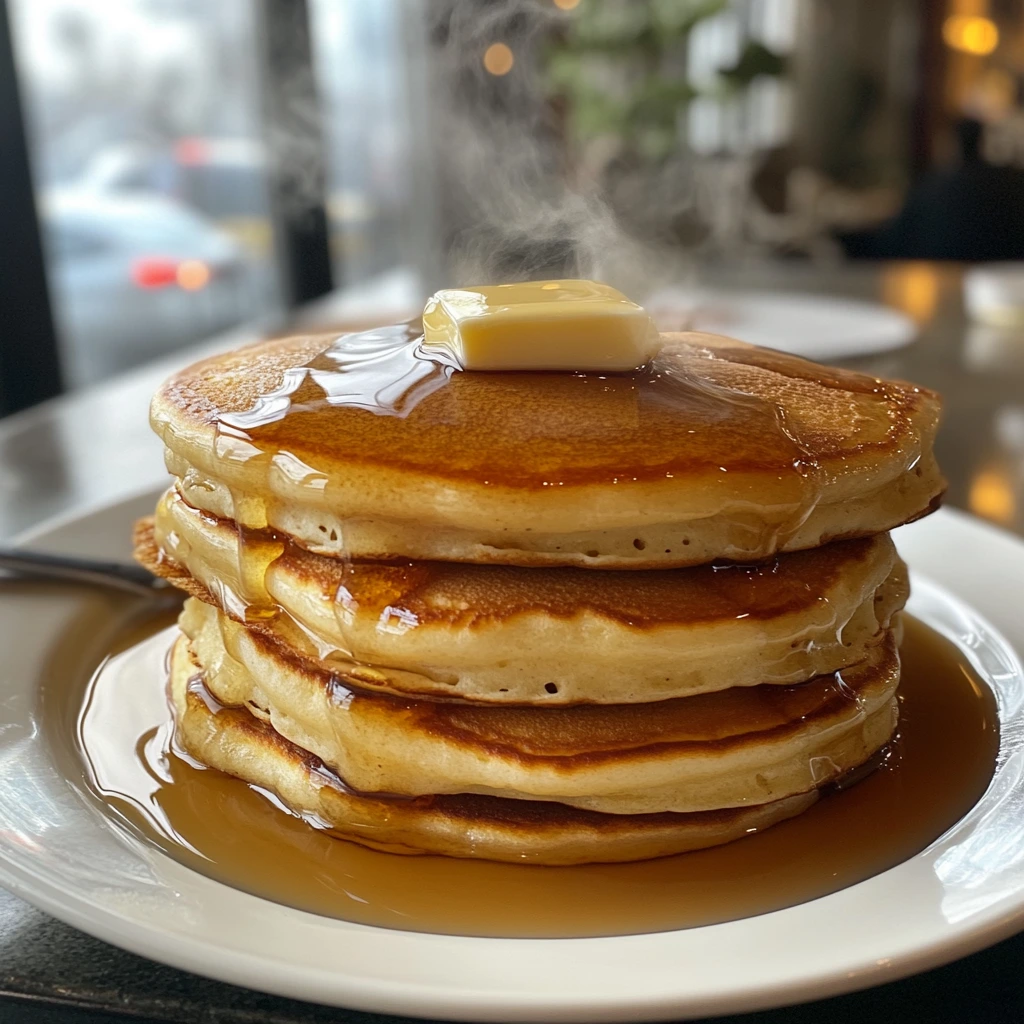
Troubleshooting Common Pancake Problems
Making pancakes may seem simple, but even small missteps can lead to disappointing results. Let’s explore common pancake pitfalls and practical solutions to ensure every batch is a success.
Flat Pancakes
Flat pancakes can leave you feeling let down, but the fix is straightforward when you know the cause:
- Expired Leavening Agents: Baking powder or baking soda is crucial for fluffy pancakes. If these are past their prime, the chemical reaction needed for rising won’t occur. Always test your baking powder by mixing a teaspoon in hot water—it should fizz if it’s fresh.
- Overmixing the Batter: It’s tempting to stir until the batter is perfectly smooth, but overmixing develops gluten in the flour, resulting in dense, chewy pancakes. Mix just until the ingredients are combined, even if there are small lumps.
- Too Thin Batter: A runny batter spreads out too much in the pan, making it hard for the pancakes to rise. Gradually add more flour, one tablespoon at a time, until the batter reaches the consistency of heavy cream.
Pancakes Stick to the Pan
Sticking pancakes can ruin your cooking flow and make cleanup a nightmare:
- Improperly Heated Pan: A cold pan will cause batter to stick. Preheat your pan to medium heat and test with a drop of water—it should sizzle but not evaporate instantly.
- Lack of Grease: Even non-stick pans benefit from a light coating of butter or oil. Use a paper towel to spread a thin, even layer.
- Old or Damaged Cookware: If your non-stick pan is scratched or worn out, even the best technique won’t prevent sticking. Consider investing in a quality griddle or frying pan.
Burnt Pancakes
Overcooking your pancakes can leave them bitter and dry:
- High Heat: Pancakes cook best on medium heat. If the pan is too hot, the outside will burn before the inside is fully cooked. Adjust the heat and cook for 2–3 minutes on the first side and 1–2 minutes after flipping.
- Uneven Cooking Surface: A warped or uneven pan causes inconsistent cooking. Use a flat, heavy-bottomed skillet or griddle for uniform results.
Undercooked Pancakes
It’s frustrating to cut into a beautiful pancake only to find a gooey center. Here’s why this happens:
- Thick Batter: If the batter is too dense, the exterior will cook faster than the interior. Thin it out with a splash of milk.
- Rushing the Process: Pancakes need time to cook through. Stick to low-medium heat, allowing the heat to penetrate evenly.
- Flipping Too Soon: Wait for bubbles to appear on the surface and for the edges to set before flipping. Premature flipping leads to uneven cooking.
Lumpy Batter Issues
Small lumps in your batter are okay, but large clumps can affect the pancake’s texture:
- Sifting Dry Ingredients: Always sift flour and baking powder to remove lumps before mixing.
- Gradual Mixing: Pour wet ingredients into the dry ones gradually, whisking as you go. This ensures a smoother batter.
Pro Tip: Use a fork instead of a whisk for gentler mixing if you’re prone to overmixing.
Pancakes Don’t Brown Evenly
A uniformly golden pancake looks as good as it tastes:
- Uneven Heat Distribution: Some pans heat unevenly, causing darker spots. Move your pan around on the burner or invest in a high-quality non-stick griddle.
- Insufficient Butter or Oil: A well-greased pan not only prevents sticking but also promotes even browning.
Edges Burn While Center is Undercooked
This issue often comes down to improper heat control:
- Pan Temperature: If the heat is too high, the edges cook faster than the center. Lower the temperature and cook for longer to achieve even doneness.
- Thick Batter Pooling: If your batter is too thick, it will pile up in the center. Spread the batter gently with the back of a spoon for uniform thickness.
Pancakes Taste Bland
Flavorless pancakes can leave your breakfast feeling incomplete:
- Underseasoning: Even sweet pancakes need a pinch of salt to balance the flavors. Don’t skip this crucial ingredient.
- Skipping Sugar: While sugar isn’t mandatory, it enhances the pancake’s flavor. Use granulated sugar, brown sugar, or even honey for a touch of sweetness.
- Low-Quality Ingredients: Use fresh butter, high-quality milk, and pure vanilla extract for the best-tasting pancakes.
Block Quote:
“Troubleshooting pancakes is like solving a delicious puzzle. Once you master the fixes, every batch will be a masterpiece!”
With these tips in hand, you’re now equipped to handle any pancake problem like a pro. 🥞✨
FAQs About Pancakes
Pancakes are a beloved dish worldwide, and they come with their fair share of interesting questions. Here are answers to some intriguing pancake-related queries.
Q: What Were the Original Pancakes?
A: The original pancakes date back to ancient times, with evidence of similar dishes found in ancient Greece and Rome. These early pancakes, known as “tagenites” in Greece and “alita dolcia” in Rome, were made with simple ingredients like wheat flour, olive oil, honey, and milk.
Q: What Is the Secret to Good Pancakes?
A: Great pancakes rely on three things: fresh ingredients, the right batter consistency, and proper cooking techniques. Use fresh baking powder for fluffiness, avoid overmixing the batter, and cook on medium heat to achieve golden, evenly cooked pancakes.
Q: What Is Queen Elizabeth’s Pancake Recipe?
A: Queen Elizabeth I is said to have enjoyed pancakes flavored with cinnamon, cloves, and nutmeg, sweetened with honey. Her recipe included flour, eggs, milk, and the spices, creating a rich and aromatic pancake perfect for special occasions.
Q: Why Are Restaurant Pancakes So Fluffy?
A: Restaurants often achieve extra fluffiness by using buttermilk and a higher amount of baking powder or baking soda. Additionally, they may let the batter rest before cooking, which allows the ingredients to fully hydrate and the leavening agents to activate.
Q: What’s the Difference Between Hotcakes and Pancakes?
A: While the terms are often used interchangeably, “hotcakes” typically refer to thicker, denser pancakes. The name “hotcake” is more commonly used in certain regions, like the southern United States or parts of Canada, but the recipes are generally similar.
Q: What Do Europeans Put on Pancakes?
A: European pancake toppings vary by region. In France, thin crêpes are often enjoyed with Nutella, sugar, or jam. In the Netherlands, “pannenkoeken” might be topped with cheese or bacon, while Scandinavian countries favor lingonberry jam or sour cream.
Q: What Are Original Pancake House Pancakes Made Of?
A: The Original Pancake House is famous for its signature pancakes, which are made with high-quality ingredients like fresh eggs, buttermilk, and real cream. They also use a sourdough starter for some recipes, giving the pancakes a unique, tangy flavor.
Congratulations! 🎉 You’ve just unlocked the secrets to making the ultimate classic pancakes. With a handful of simple ingredients, a little care, and the troubleshooting tips in this guide, you can whip up a stack that’s fluffy, golden, and irresistibly delicious every single time.
Whether you’re sticking to the classic recipe or adding your own creative spin with mix-ins and toppings, pancakes are a true breakfast MVP. They’re easy to customize, fun to make, and loved by everyone—from kids to adults. So, gather your ingredients, heat up that pan, and enjoy the process. After all, there’s nothing more satisfying than sharing a homemade breakfast with loved ones. 🥞💛
Discover More Delicious Recipes to Complement Your Pancakes
If you loved exploring the art of creating the perfect classic pancake recipe, why not expand your culinary adventures? Here are some delightful recipes from our site that pair well with pancakes or inspire further breakfast creations:
Hawaiian Banana Bread Recipe
Dive into this tropical treat that complements pancakes beautifully for a vacation-like breakfast.Breakfast Tacos
Explore savory options to diversify your breakfast table.Easy Make-Ahead Egg Breakfasts
Prepare your mornings effortlessly with these prepped egg dishes.Healthy Breakfast Burrito
A nutritious and filling option that balances the sweetness of pancakes.Banana Bread Recipe with Oil
Pair this moist banana bread with your pancake spread for a delightful brunch.
These recipes not only provide variety but also enhance your breakfast experience. Check them out and let your kitchen creativity shine!
